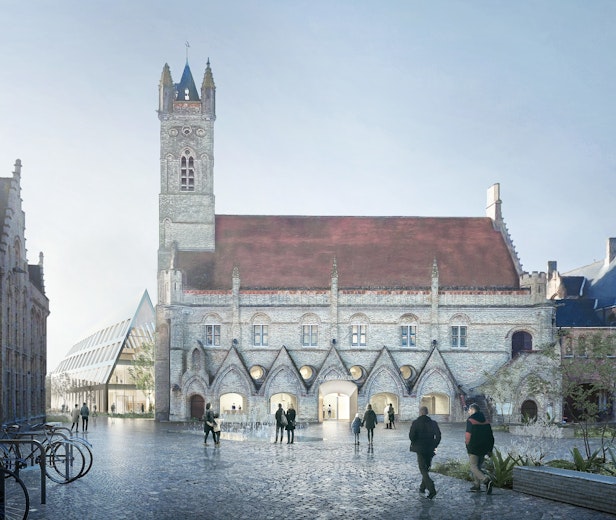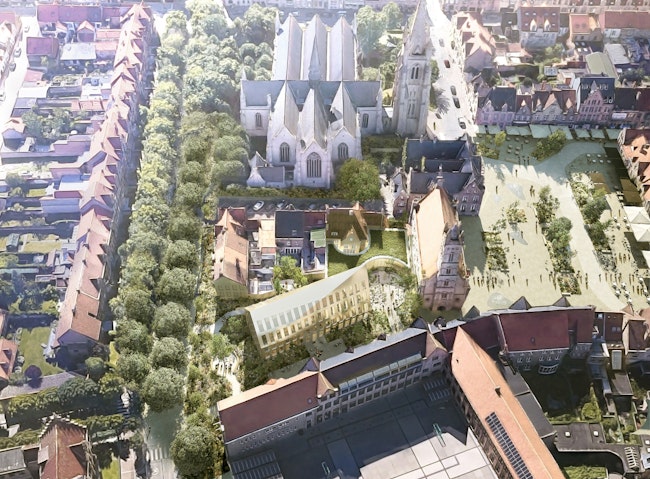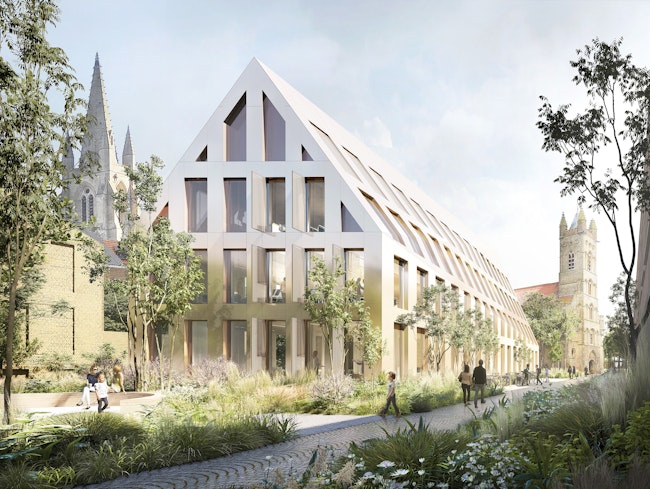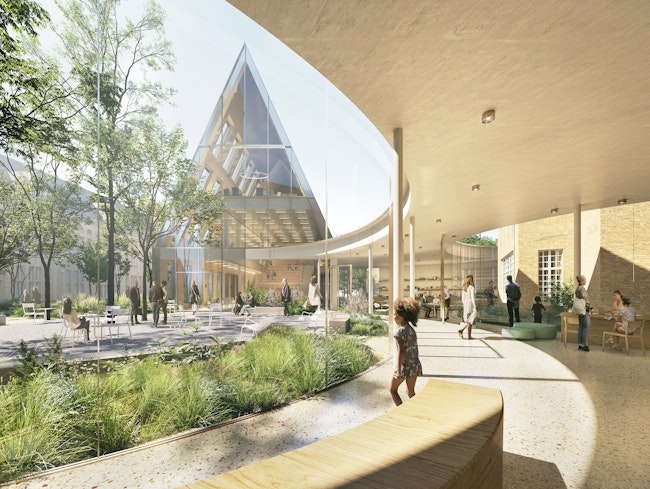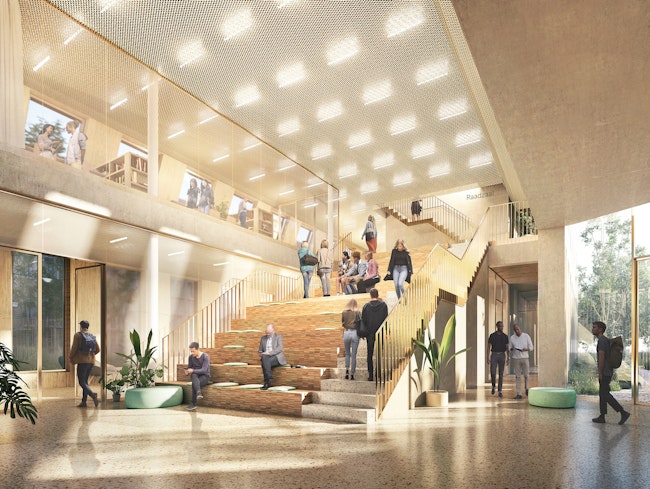Nieuwpoort town office
Public buildings
Design of a contemporary town office and restoration of the town hall, the rectory, the market hall and the belfry for the city of Nieuwpoort.
Our approach to the historical site and the position of the new town office stems from the urban planning visions of architect Viérin, who was appointed after WWI to rebuild the city of Nieuwpoort. With the market hall, the town hall and the rectory, he created a unique urban complex, the original design and unity of which have been preserved to this day.
Because of the high technical requirements and user comfort, the administrative offices, the 'Alma Plaza' meeting area, the tribune and the council chamber are housed in the new building, which we call 'the icon'. The northern part of the building overlooks the cluster of existing UNESCO World Heritage buildings and will in turn be given an iconic design language that ties in with the pointed roof of the market hall. On the south side, the building radiates serenity, which in turn aligns with the more residential character of its neighbours.
The construction that connects the market hall, the rectory and the icon is called ‘the connector’. Unlike the icon, the intention here is not to create a stately volume. The building is light and unobtrusive and acquires its shape through a large, circular cut-out that forms the central, open garden of the site. A second, smaller circle is cut out at the rectory level, so that the character of the freestanding building is preserved.
The new town office contributes to a sustainable society. The buildings are climate adaptive and fossil free. To provide the necessary heating and (passive) cooling, we make use of geothermal energy (BEO field) and heat pump technology. Rainwater is recovered and reused as much as possible, excess storm water is captured in the convent garden. Flat roofs will be transformed into green roofs.
The public area around the town office will be greened to the maximum. This will provide increased biodiversity, cooling, clean air and a noise-free environment in the centre of Nieuwpoort. The choices of materials and construction methods also confirm a thorough circular approach with a focus on maximum reuse, value retention (town hall, market hall, rectory) and removable finishing. For example, in the restoration of both the outer shell and the interior, we are taking a soft restoration approach. In addition, in the three protected monuments, we make several well-considered interventions that guarantee their sustainable usability and interaction within the overall design, such as provisions in the area of accessibility, internal circulation and energy measures. The new building will have a demountable steel skeleton and the choice of materials will be supported by LCA (Life Cycle Analysis).
A healthy and comfortable indoor climate is essential for the employees. The buildings are therefore equipped with high-performance mechanical ventilation with heat recovery, thorough insulation and increased air tightness. We select interior finishing materials on the basis of their toxicity, and the use of adhesives and sealants is minimal.

